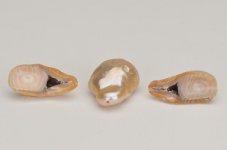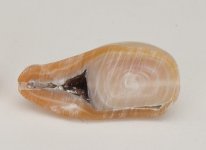jshepherd
Pearl Paradise
- Joined
- Jun 22, 2004
- Messages
- 6,334
I was just in China again last week (third trip this year) visiting the producer of the souffle' pearls. He had some new pearls to show me and claimed that they were nucleated, but with pearls instead of beads.
I had him break a few of them to show me, only because I had heard this so many times before, but every time I've opened the pearl, there was no second pearl inside.
Well, he did it. Maybe this can eventually put an end to the clam shell beads that are being used now in the fireballs.
Enjoy!


I had him break a few of them to show me, only because I had heard this so many times before, but every time I've opened the pearl, there was no second pearl inside.
Well, he did it. Maybe this can eventually put an end to the clam shell beads that are being used now in the fireballs.
Enjoy!



